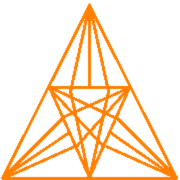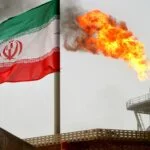The tense atmosphere and dark clouds of uncertainty hovering all over Ukraine is an invitation to a brewing catastrophe. A catastrophe, having the potential to engulf the whole world into all-out war at a time when the nations are still reeling under the pressure of the pandemic.
” On the Historical Unity of Russians and Ukrainians”:(An Article by Russian President Vladimir Putin) is a 5000-word piece of lament from a man who still considers the collapse of the Soviet Union’s to be the “biggest geopolitical cataclysm” of the twentieth century?
While December 2021 marked the 30th anniversary of the USSR disintegration, 2021 began with the rise of a new President in the White House, a torchbearer to the survival of democracy. But, with the resurgence of conflicting ideologies, confrontation was just waiting in the corner.

Picture Credits@ Artem Kniaz
Amidst all these, Ukraine, a former Soviet bloc and presently pro-European, is sandwiched in this conflict. The Ukrainians welcomed 2022 with the fear of a brewing catastrophe between the U.S. and Russia. The U.S. is trying to uphold its position as a global decision-maker (in decline). Russia under Putin fights to reinstate its superpower position.
Riya Peter
Both the Presidents are enthusiastic about blaming each other for the current escalation. For Biden, he is bound to protect the sovereignty of a democratic nation resisting Putin’s autocracy. Meanwhile, Putin convinces Russians that the Kyiv turning Westwards is an urgent security threat to Moscow.
UKRAINE AND THE NATO
An unclassified U.S. military document published by the Washington Post in December 2021 has been creating echoes of an imminent III World War on Europe’s soil.

Picture Credits@ Eugene
More than 100,000 Russian troops deployed along with tanks, self-propelled artillery and short-range ballistic missiles within the striking range of Ukraine’s borders. All these remind the globe of the 1962 Cuban Missile Crisis.
Ukraine has indeed turned to be the prey of the U.S. power play in the post-Cold War. Though most analysts blame Putin for the current crisis, in reality, NATO is the one who helped create this. In time, NATO explicitly formed to counter the Soviet expansion, has been adopting a more expansionist and aggressive policy recently.
The alliance has moved its boundary hundreds of miles eastward, adjoining a dozen countries from the former Soviet bloc. For Moscow, this was a hostile move from a potential enemy.
The end of a precarious peace in Ukraine began when President George W. Bush compromised to grant permanent NATO membership to Ukraine and Georgia. Deciding in 2008 Bucharest Summit amid opposition from other NATO members like Germany and France.

However, the exact time and way for the integration have never been specified until now. The Bucharest compromise only catalysed a crisis with long term consequences.
NATO and U.S.
The critical question of how the U.S. and NATO will support Ukraine in a Russian invasion is significant. Ukraine is only a NATO partner and not a member. This fact is enough to know to what extend both actors will resist Russia.
Ukraine, acting as a buffer zone since 1991 between the West and Russia, will not benefit from NATO’s core principle- ‘the commitment to collective defence. Thus, NATO is not bound by any treaty to Ukraine militarily.
Nonetheless, in a broader picture, both NATO and the U.S. had provided a steady yet modest military backing during the 2014 crisis when Russia seized Crimea. The act was essential as around 14,000 lives were lost in the conflict between the Ukrainian army and the Russian backed separatists at Donbas at the eastern flank of Ukraine. Also, designating a $2.5 bn military aid since the seizure of Crimea.

Biden, severely criticised for his moves in Afghanistan, cannot afford another setback. The Putin-Biden virtual conflict on December 7 2021, underlined the latter’s reluctance to jump into another war.
The White House has repeatedly denied putting U.S. troops in Ukraine, and Biden has backed this claim through his statement that unilateral use of U.S. forces against Ukraine is improbable to happen.
During the annual news conference last month, Putin has not definite whether he would invade Ukraine but instead reiterated that Kyiv is preparing to attack Russia.
How far can the U.S. and its allies support Ukraine? As the deployment of military force is out of the table, the only possible way is economic sanctions. In their virtual meetings, Biden has warned Putin of extremely severe sanctions that could disrupt the economy of Russia. Putin seems to agree with this.

Picture Credits@ Iurie Ciela
THE ROLE OF EU AMIDST THE UKRAINE CRISIS
Amid an unending pandemic, Europe may encounter one of the most significant military moves in their land since World War II. The European Union, particularly Germany, has a crucial role in an economic sanction against Russia.
The future of the Nord Stream 2 pipeline- the gas export pipeline between Russia and Germany through the Baltic sea- will be a significant decision-making factor. Deviating the project from a commercial pipeline with critical geostrategic consequences will have its own repercussions.
For Kyiv, this pipeline is a political tool of Russia to increase its control over Europe. Poland, the Baltic states, Italy, the U.K. and the European Commission, has backed this opinion. However, the European nations cannot deny the fact, that in their pursuit of transitioning to green energy these gas pipelines play an important role.

Furthermore, the energy relationship between Russia and European Union is symbiotic. The EU imports nearly 40% of its natural gas from Russia and despite the major lows in the Russia-EU relationship, the only thing that remained constant was the Gas-trade. (Understand this in more detail- read the article here)
The US senate already agrees that the gas pipelines are a geopolitical threat to European nations, providing Russians with more leveraging moves. However, owing to Angela Merkel’s diplomacy, the Biden administration had lifted sanctions against the project in May 2021.
Ukraine President Volodymyr Zelensky considers this decision a stab on his back for not giving a chance on the decision-making process. Since the pipeline passes through the Baltic Sea and not Ukraine. This gives Moscow a way to pressurise Kyiv.
The Current Scenario
Biden’s only aim was to get the support of Germany to contain the growth of China. Obviously, Biden has purposefully decided to overlook the geopolitical threats on Ukraine. His only struggle is to maintain the U.S. as a strong opponent of China in the global power structure.
Significant developments have occurred since then. Olaf Scholz became the German Chancellor, Biden failed in Afghanistan, and Putin became closer to Xi Jinping, making a Russia- China entente.
Olaf Scholz told reporters in December that he is bound to protect the inviolability of European borders. Following this, the German energy regulator has been stalling the final decision on certifying the Nord Stream 2 pipeline until at least the second half of 2022.

However, this is not satisfying the E.U. leaders. They are urging the German Government for a more powerful message, including the possible termination of the project if the conflict escalates further. It is an economic weapon for both sides. Simultaneously for most of the E.U., the pipeline is a blackmail tool in Putin’s hands.
SUCCESS OF DIPLOMATIC TALKS
Choosing diplomacy to be the final track U.S. and Russia are all set for a face-to-face talk in Geneva on the 9th and 10th of January 2022.
The Russia-NATO Council negotiations and a meeting of the Organization for Security and Cooperation in Europe are part of the Geneva talks led by senior U.S. State Department officials. In constant contact with the Ukraine President and its E.U. powers, the U.S. is assuring that they will reach no final outcome without discussions with its European allies.
Confirming the clarity on the success of this diplomatic mission will be too far fetched for now. There is no denying that Russian President Vladimir Putin holds an upper hand. He is a cautious and calculating administrator. The likelihood of Biden attaining the status of a saviour of democracy is far due to several reasons.

Picture Credits@ Volodymyr Tokar
Firstly, the demands of Russia are, in reality, a provocative measure to coerce the U.S. to engage in a diplomatic talk. If the U.S. agrees to both the treaties, this will put Europe in a predicament. Europe needs NATO to keep the former Soviet states aligned with the West.
Reaching an agreement between Washington D.C. and Moscow keeping Europe at the sidelines could have a detrimental effect on the Biden administration’s global power status.
Furthermore, the Chinese support to Russia could reduce the impact of an economic sanction from the West. Finally, Putin wants a Russian supporter in Ukraine. The removal of the pro-Russian Victor Yanukovych from the presidency in 2014 was a blow on the former’s interests.

The current President Volodymyr Zelensky is an open supporter of the E.U. One of Putin’s ultimate aims might be to destabilise the current Ukraine Government and instead place someone who will not resort to the West for support.
CONCLUSION
On balance, a III World War is not the ultimate objective of Putin. He only intends to change the post-Cold War setup of Eastern Europe, i.e., to keep NATO out of this region and the U.S. intermediate-range missiles out of Europe. Thus, the notion of imminent War is the medium for Russia to restitute its Soviet legacy.
About the Author:
RIYA PETER

Born and raised in Kerala, Riya Peter has always dreamed of exploring life beyond a traditional Malayali lifestyle. She has completed her Masters in Politics and International Relations from Mahatma Gandhi University, Kottayam. She is profoundly interested in European Politics and keenly focused on security and diplomacy from both European and international standpoints.








Very insightful.
Very informative🤝. Expecting works like this from the part of author.
Thought provoking.
Nice read.
[…] Jan 12 2022 […]
[…] Read more about what has led to the current conflict between Russia and Ukraine here! […]
[…] Read more about what has led to the current conflict between Russia and Ukraine here! […]